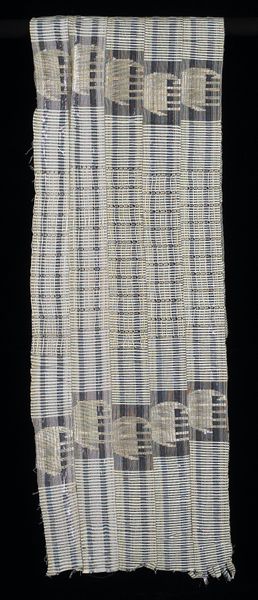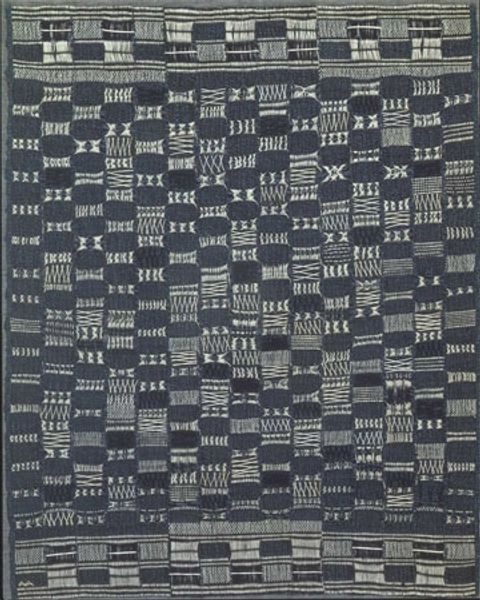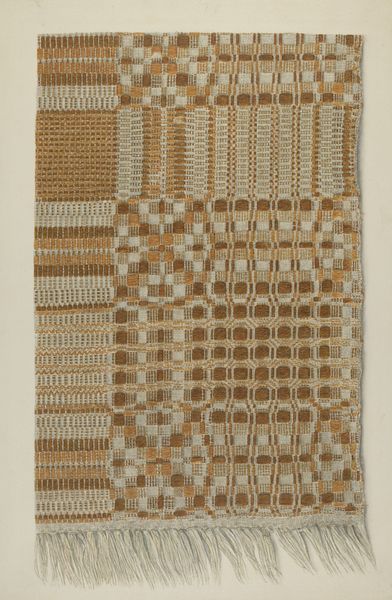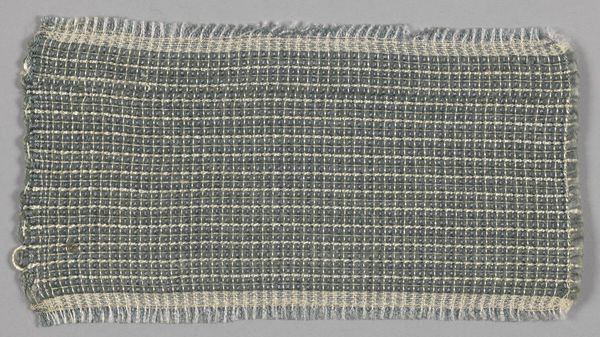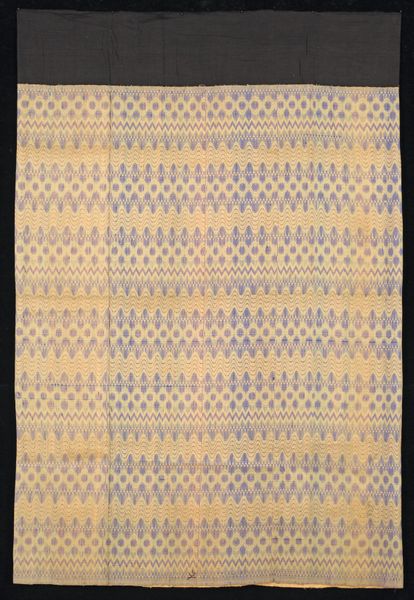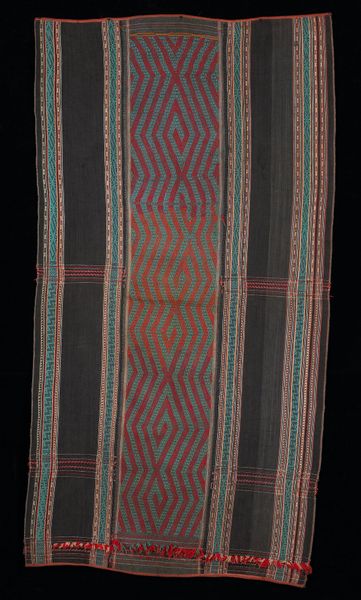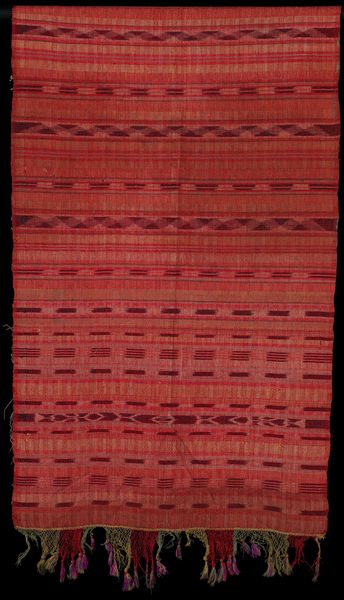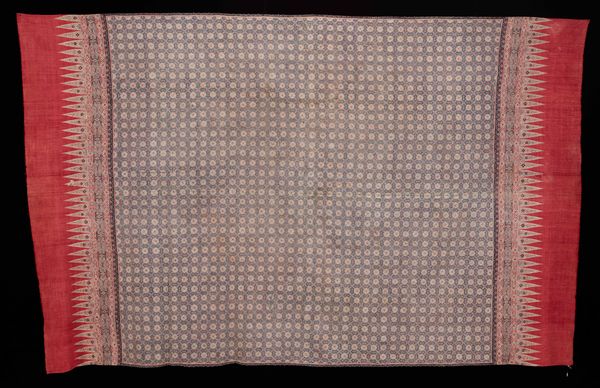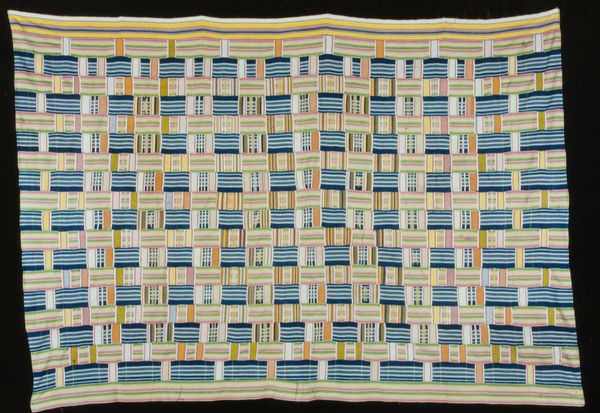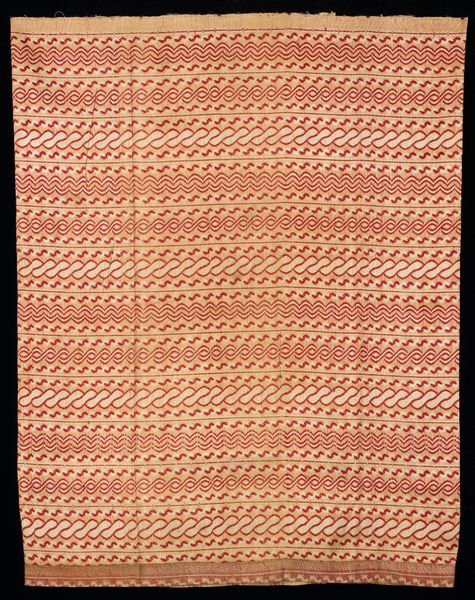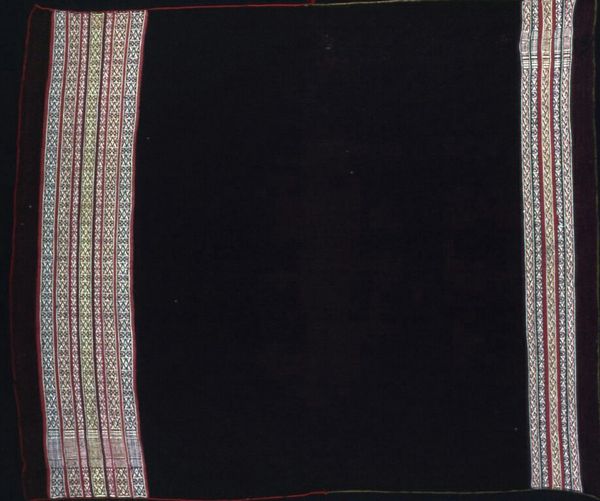
fibre-art, weaving, textile, cotton
#
fibre-art
#
weaving
#
textile
#
geometric pattern
#
geometric
#
regular pattern
#
cotton
Dimensions: 78 x 52 1/2 in. (198.12 x 133.35 cm) (including fringe)
Copyright: Public Domain
Editor: This woven piece, titled "Khes," dates from around the mid-20th century. It’s a cotton textile with a really striking, grid-like geometric pattern. It feels quite functional, but also possesses a sort of quiet beauty in its repetition. How do you interpret this piece in terms of its construction and context? Curator: For me, the focus lies on its production. "Khes," often made by women, represent more than just decorative objects. It's essential to see them as products of labor, reflecting both the maker's skill and the resources available. Consider the cotton used – was it locally sourced, or traded? The geometric patterns aren't merely aesthetic; they are structures born from a specific weaving process. Editor: So you’re saying the value comes not just from the design, but the entire process of creating it? Curator: Precisely! This wasn't produced in a vacuum. Thinking about the social conditions – was this made for personal use, trade, or as a commission? Were the materials easily accessible, or was acquisition difficult? By asking these questions, we see “Khes” as a confluence of material realities and cultural practices rather than simply an artwork. What about the regular patterns -- how might the repeated labour impact our interpretation? Editor: That's fascinating, to consider it from a worker's perspective. So much intent goes into something crafted by hand rather than by a machine. Curator: It allows us to appreciate how materials shape cultural expression. Considering these pieces outside a strictly fine art framework encourages an analysis which bridges historical divides between art, craft, and the everyday lived experiences embedded within its materiality. It transcends aesthetic value; it represents tangible cultural value! Editor: I’ll definitely look at textiles differently now. I never thought about the process as part of the art itself. Thanks for your perspective!
Comments
No comments
Be the first to comment and join the conversation on the ultimate creative platform.
